The First King of Bengal
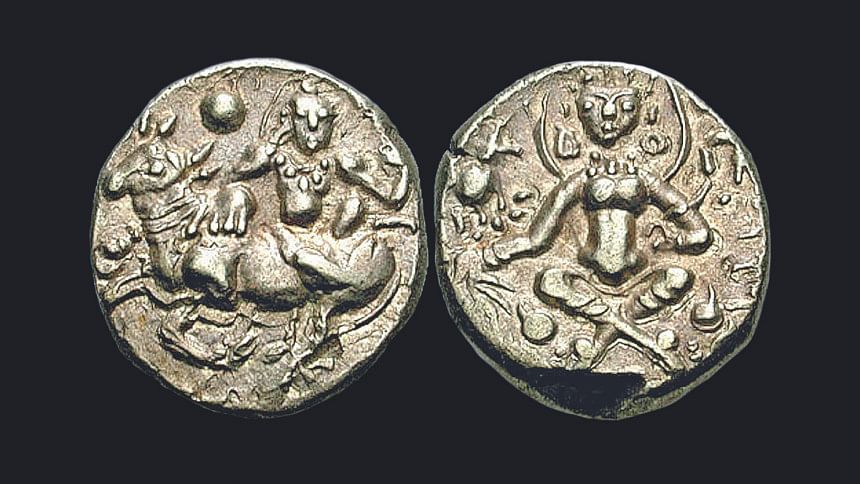
Before the tribes and kingdoms of pre-medieval Bengal could unanimously elect Gopala king in 750 CE, they had to endure a hundred years of utter lawlessness, infighting and bloodshed. This period is called the Matsyanyaya (a time when big fish indiscriminately swallow the small). While we know how the Gopala's Pala Dynasty heralded a golden era in Bengal, little is known about the dark age, and what came before.
Before the Matsyanyaya, we find in the lower Gangetic plains many distinct kingdoms and janapadas (e.g. Vanga, Samatata, Pundra, Harikela, Gaur/Gauda, Magadha, Kalinga etc.) – each flourishing as the powerful Gupta Empire faded away. Within the next hundred years, these kingdoms would develop feudalist traits, and coagulate to make up a familiar geopolitical bloc: Bangla, Bihar, and Odisha (dubbed 'Bengal' in this essay).
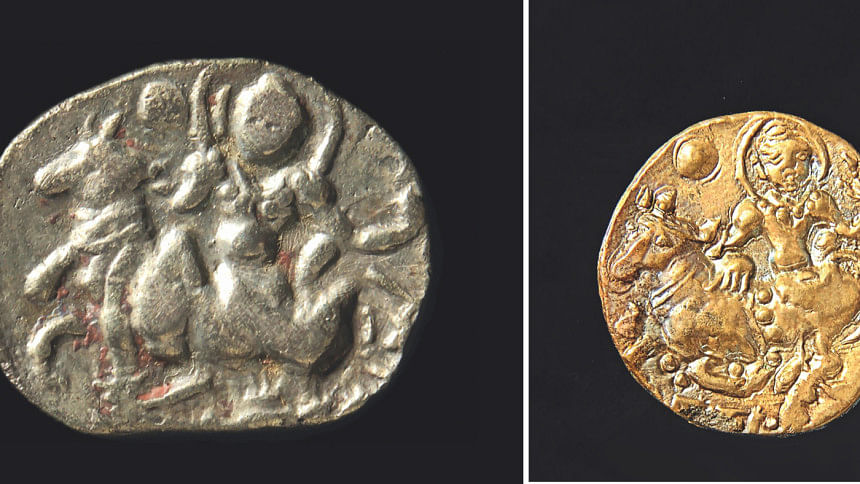
In the light of what we know: during the beginning of the 7th century, a Shaiva, Brahmin king of Gaur named Shashanka started bringing large tracts of the lower Gangetic plains under his control. He led military campaigns against mighty kings and armies in every direction, and established his dominion over a considerable part of the former Gupta Empire.
***
The earliest mention of Shashanka is found in a seal matrix in the Rohtas Fort in Bihar. In the seal, he is referred to as a mahasamanta – i.e. a veteran feudatory chief or tribal king. Oddly, the sprawling hill fort offers no other clues for historians. Therefore, conclusions must be drawn based on what little information is at hand.
Rohtasgarh was a strategic hilltop fortress on the western edges of Magadha – connected to important cities through roads and waterways. It controlled access to all of east India and Bengal. So crucial was its position that, centuries later, Sher Shah Suri and then Moghul Emperor Akbar would use it as a strategic garrison for territorial control.
That Shashanka's seal was found in Rohtasgarh, means that he wasn't 'just a feudatory' as some suggest. Rather it seems the most crucial fortification in Bihar was placed under his command, an honor typically bestowed upon top feudatory chiefs and governors.
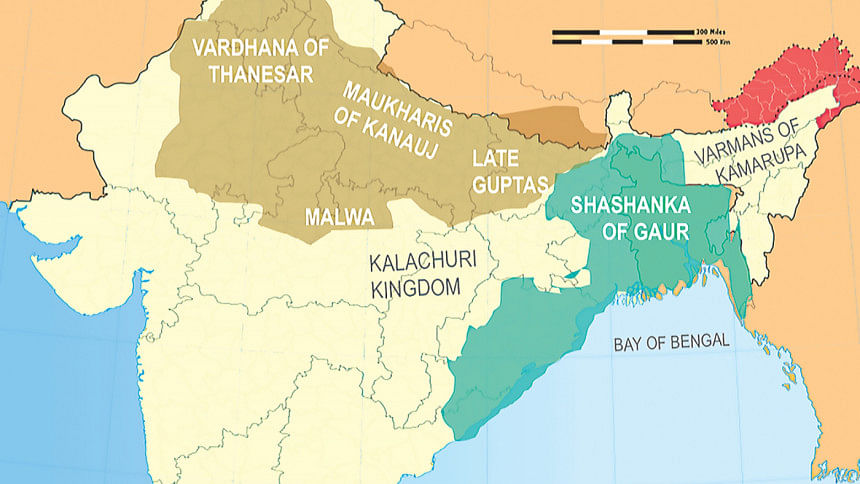
Now, this mountainous region was under the Gupta kings till the 5th century, and was later controlled by the Maukhari dynasty. Therefore, it is probable that Shashanka (and/or his predecessor Jayanaga) were feudatories, under Late Guptas first, and then under the Maukharis. The Gupta connection could explain how Shashanka managed to make an ally out of the Late Gupta king Devagupta.
The title 'mahasamanta' is instructive too. In ancient Indian empires administrators had been imposed from above by royal decree. But by the sixth century, 'samanta's were chosen from existing tribal kings, who were made to plead allegiance to the sovereign king (Kulke 1986). For sovereign kings, this was an easy way to control powerful regional kings and chiefs. The more samantas a king had, the more powerful the king was thought to be.
So, had Mahasamanta Shashanka then emerged as a king of the ancient mountain tribes of Kaimur? Well …it does not appear so. Firstly, many historians, including BP Sinha, categorically label Shashanka as a 'Gaur'. Secondly, Shashanka's immediate predecessor, as per numismatic (coinage-related) evidence, appears to be Jayanaga of Gaur (and not a tribal chief). Thirdly, the mountain tribes of Kaimur have historically worshipped forest deities and mother goddesses like Shitala. On the other hand, Shashanka is identified as a staunch Shaiva (Shiva worshipper) Brahmin, who made land grants to Brahmins and used Shiva's imagery in his coins.
But then, why was his seal found in the Rohtas Fort? Well, considering the strategic role of the fort in guarding the entryway to Magadha, it is probable that Shashanka was stationed there to defend sovereign territory against rogue invaders. But it does not seem like he was a native of Kaimur hills.
Shashanka can be better placed as hailing from further east, in the Gaur region, potentially from Karnasubarna (near Rajshahi). Nagendranath Basu, in his encyclopedic work 'Bonger Jatiyo Itihash' posits that Shashanka is the son of the Raja Karnadeva, who founded the city of Karnasubarna. Mention of the Karna Raja is found in folklore as well, the supposed ruins of his palace being a minor tourist attraction in Karnasubarna till this day.
While we cannot pinpoint Shashanka's birthplace for certain, fragmentary facts and anecdotes seem to bind Shashanka to Karnasubarna together. Karnasubarna is where he eventually established his capital. History of medieval India tells us that most samanta rajas emerged and ruled from within native territories, and over their own people. Therefore, it may be surmised that Karnasubarna in Gaur was Shashanka's true home, and the ultimate seat of his power.
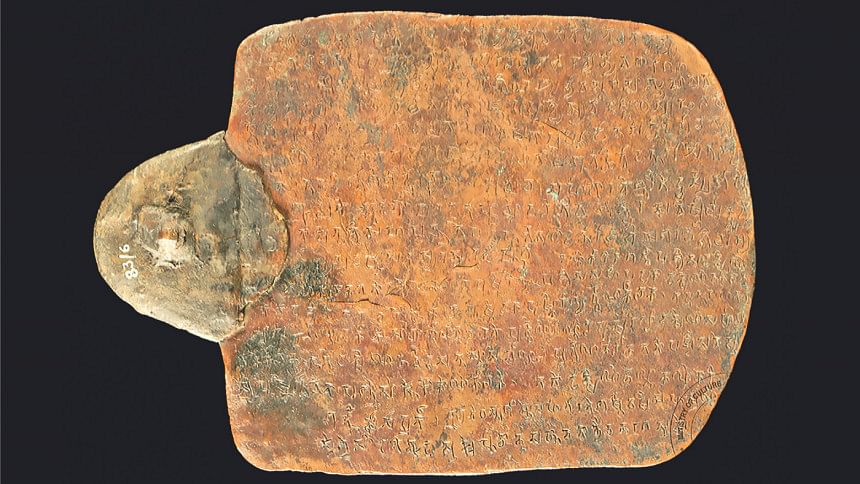
***
Shashanka's reign bears all the hallmarks of late Classical kings of India, having started with tremendous conquests or digvijay. In 595 CE, Gupta king Mahasenagupta and the Gaur army jointly attacked Kamarupa (Assam). Inscriptions testify that Shashanka – whether as king or feudatory – was leading this Gaur Army.
King Susthitavarman was killed in this battle. In the second battle, his two sons were captured and brought to Gaur as prisoners. Shashanka later freed the princes, and probably reinstated them as feudatories. Next he took on the Maukhari army and freed Magadha from their control. His familiarity with Rohtasgarh and the surrounding region probably informed his military tactics.
At the same time, Gaur influence was also extending towards the Bay of Bengal. It is thought that, one by one, he subdued the kings of Pundra, Vanga, and possibly Harikela. Even Samatata, which had evaded the advances of the great Samudragupta, came under his control – as suggested by his gold dinars issued from Samatata (the coins can be seen at the Bangladesh National Museum). Historian Sailendra Nath Sen (1998) confirms, "[Shashanka] brought the whole of Bengal under his sway."
Next came Odisha, possibly up to the beaches of Puri. To the west, Benaras came under his control. In his own country, he built temples, granted lands and patronized local crafts e.g. pottery. By this point, Shashanka was a full-fledged king, with his own feudatories, ruling over a prosperous kingdom. It is in reference to this point in history that many analysts and commentators use 'Gaur' and 'Bengal' interchangeably.
***
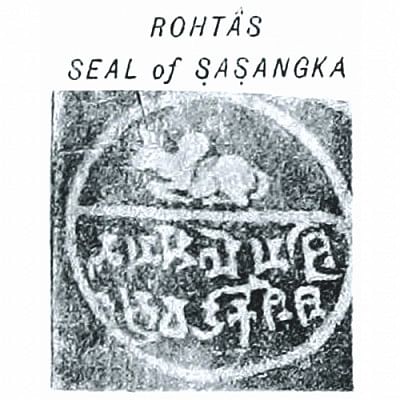
In 605 CE, Late Gupta king Devagupta occupied Kannauj and killed the ruling Maukhari king. The latter's allies in Thanesar quickly mobilized a massive army. Now, Shashanka was in an alliance with Devagupta. So in Devagupta's defense, Shashanka was drawn into the war as well.
It is said that Shashanka requested to meet King Rajyavardhana of Thanesar, and killed him under murky circumstances. Buddhist accounts accuse him of using falsehood and deceit to lure Rajyavardhana into his camp. R.C. Majumdar opines that Rajyavardhana as a veteran king is unlikely to have fallen for such a trap.
The details of Rajyavardhana's death, and Shashanka's role in it, are not known. However, if one were to assume that Shashanka was versed with Kautilyan principles of warfare – then the use of deceit isn't surprising. It may be noted that the township closest to Rohtasgarh contains one of King Ashoka's minor edicts. So Shashanka was likely to be aware of Mauryas, and their tactics.
Either way, Shashanka went on to defeat the Thanesar battalions, and occupy Kannauj. The conquest of Kannauj marks the height of Gaur's expansion. But it was a short-lived zenith. Shashanka had to withdraw soon: the avenging force of the Thanesar army under new King Harshavardhana was pressing at the gates. Harsha, younger brother to slain Rajyavardhana, had sworn to either make Shashanka pay, or jump into a pit of fire.
Harsha is said to have launched multiple attacks on Gaur. But till 619 CE, Shashanka not only defended his territory, but also issued copper-plate inscriptions and gold dinars from Karnasubarna. It is only after his death, that Harsha made inroads into Gaur territories.
Once Shashanka died, the Gaur Kingdom followed. Soon large tracts of were gobbled up by Harsha and the Kamarupa king (one of the princes earlier freed by Shashanka). And thus the ephemeral reality of a sovereign kingdom in Bengal came to fruition, even if for a short while.
As mentioned before, what followed is sheer anarchy. In the absence of a unifying overlord, tribal states and kingdoms started attacking each other, pillaging whatever gold they could, occupying whatever land they could.
It is from this chaos – the Matsyanyaya – that a new order emerged. The tribes and kingdoms elected Gopala king. The Palas, like the Gupta kings, came from the Varendra region of Bengal. They became known for the development of the proto-Bengali language and script, and early literature. Palas adhered to political boundaries established by Shashanka. The preeminent Bengal historian R.C. Majumdar wrote, "[Shashanka] was the first historical ruler of Bengal who not only dreamt imperial dreams, but also succeeded in realising them. He laid the foundations of the imperial fabric in the shape of realized hopes and ideals on which the Palas built."
***
We see that Shashanka ruled independently over his territory and population, with ministers and feudatories to advise him. He formed strategic alliances and waged wars to expand his kingdom. He collected taxes and probably used some form of treasury function to finance his coinage, construction and campaigns. His Gaur army remains venerated for its war-elephants and naval force. These fulfill the seven Kautilyan preconditions for a state or kingdom.
To add to that: following his death, his kingship passed to his son, Manav – establishing that Shashanka had held a dynastic position. So, looking back 1400 years into the past, it wouldn't be wrong to posit that Shashanka of Gaur was the first king of Bengal.
***
In spite of all this, King Shashanka remains a footnote in mainstream Indian history. He is evoked not as a great king – but as the thorny opponent of a great king. In fact, the only reason we even know of Shashanka is because of his rivalry with the much-adulated King Harsha of Thanesar.
An important historical text on Shashanka is Harsha's biography, composed by court poet Bana. In it, Harsha's martial skills, artistic sensibilities and ethical vegetarianism are masterfully eulogized. Shashanka, on the other hand, is likened to a serpent.
Another primary source is the Chinese monk Hsuan Tsang who, with Harsha's patronage, traveled through 7th century India, and compiled important historical records of the period. Framing "She-Shang-Kia" as 'hostile to Buddhists', he accused the Brahmin king of ordering the indiscriminate killing of monks and the destruction of Buddhist holy sites.
Yet Tsang ended up in Nalanda (in Shashanka-ruled Magadha), under the tutelage of the famous Bengali abbot Silabhadra of Samatata. At that time, Nalanda alone had 1500 Buddhist teachers! Bhattacharya (2008) remarks that this hardly sounds like suppression and persecution of Buddhism. Tsang's description rather speaks of a flourishing Buddhist center. Eventually, Tsang managed to take Silabhadra's teachings back to China, and thus expose the Sino-Japanese belt to Indian Buddhist thought.
Through such accounts, readers come to perceive Shashanka as a source of trouble. They find him a brute atop demolished monasteries, and a coward on fleeing war-boats on the Ghaghara River. More often than not, he emerges from the pages of History as a lying, unscrupulous murderer, especially when Harsha's court poet hands him the bloody dagger after the murder of King Rajyavardhana.
That Shashanka's mentions and chronicles emerge mostly from political opponents and adversarial sources – considerably shapes his image and legacy in modern history. Such motivated and monolithic characterization, in turn, justifies his place (or lack thereof) in history. Critically, it also leaves us somewhat reluctant to redeem Shashanka from the villainous and insignificant role cast for him over the centuries.
Adnan R Amin is CEO at Purplewood, a strategic and behaviour change communications agency. He can be reached at [email protected].

 For all latest news, follow The Daily Star's Google News channel.
For all latest news, follow The Daily Star's Google News channel. 



Comments